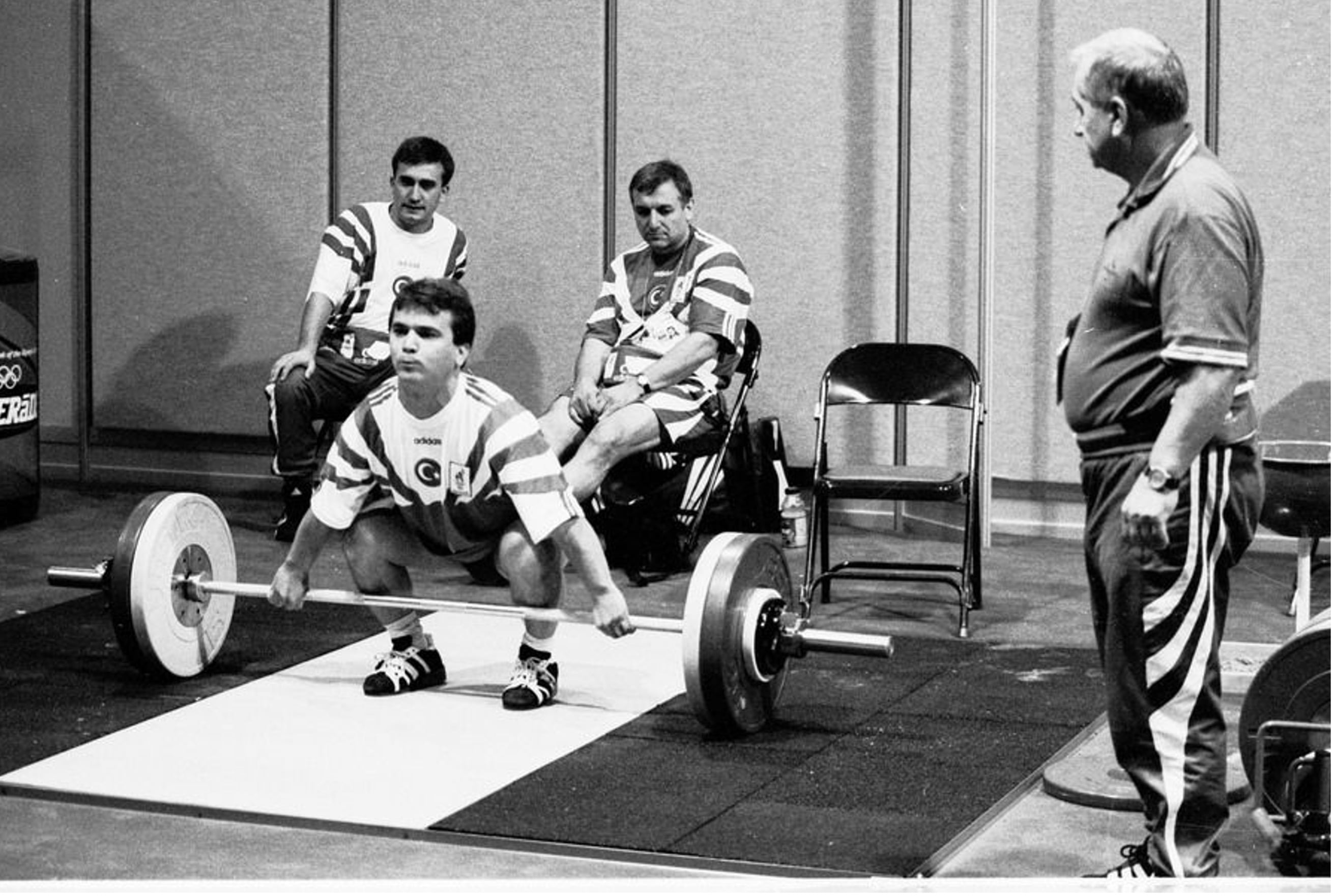
In the coaching trenches: ordinary folks obtaining extraordinary gains
Real coaches coach: getting real results for regular people on a routine basis
I am a strength coach. I build and strengthen the human body through coaching. If you want to increase your current quotient of muscle, power, and applicable athletic strength, I can show you how. I am both a strength theoretician and a strength coach. There is a difference. Strength theoreticians divorced from coaching are both common and flawed. I theorize, then take my newly hatched mental strategies to the gym to test-drive them on myself and others.
I coach a squad of “regular guy” athletes every week. We are all voluntary lab rats in a decades long double-blind study on acquiring human strength: we go where results lead. I used to coach elite athletes to near exclusion, now I mostly coach regular people, neighborhood guys, motivated men, short on time - but all in serious pursuit of muscle and power. Our current group ranges in age from 14 to 65. Again, regular folks making extraordinary gains.
Because they live in the neighborhood where we train, they just so happened to fall into our orbit. The point being: our system works for anyone and everyone. Properly enacted, ultra-minimalistic strength training, the kind we preach, will grow muscle, strengthen the body, and improve performance every single time a motivated individual uses as directed.
One common misapprehension about hardcore strength training is that we beat gains out of trainees. Factually, we coax gains. Coaxing results on a consistent and ongoing basis for regular folks is far more of a coaching challenge than obtaining results for seasoned athlete already at 99% of their awesome genetic potential. I still consult with elite athletes, and they are always dropping by to train with us. Hall of Fame powerlifter Kirk Karwoski coaches the same athletes as I do because he trains with us every Sunday.
The Sunday format is always the same: show up at 9 am and over the next two hours work through the “core four” lifts, the fundamental compound multi-joint progressive resistance exercises: overhead barbell press, squat, bench press, deadlift. The elite and the beginner use the identical training template. They adopt the same signature techniques and use similar periodized strategies. What differs between the beginner and the advanced trainee is the poundage, the payloads used. Everyone uses the same techniques and tactics.
A decade ago, when we began these sessions, held in an unheated country barn, I talked a lot. I had to explain, to teach the why’s and wherefores of the training tactics and exacting techniques passed along to me by my world champion mentors. In 2022, I teach the locals the same exact strategies and techniques I used decades ago to guide a young Kirk Karwoski to six straight IPF world championships, seven national titles, and a dozen world records. Kirk is widely considered the greatest squatter in the history of powerlifting. He train/s with us today in the same identical way he did as a young lifter. His payloads are lighter – yet, at age 57, his techniques have never been crisper.
As many as twenty weightlifters will populate three different training platforms. All will work their way through the overhead press, squat, bench press, and deadlift, always in that order. Each platform populated with men of similar strength levels. After working through the core four, they might do some arm training, perhaps some power cleans. Or not. It is the four lifts that matter. They are the meat and potatoes, everything else is dessert.
Each week each participant seeks to attain their preplanned periodized workout goals: in each of the four lifts, poundage/rep targets identified ahead of time. Small sequential successful jumps in reps or poundage compound and amplify into big gains when set into a three-month, 12-week periodized timeframe. The goal is to attain weekly goals. Attain the weekly goals and the overarching goal takes care of itself.
Our Sunday sessions are a beehive of activity; the boys are quite vocal in supporting one another on their “top set” efforts. My own role is that of senior coach. A decade ago, when I began working with “the locals,” I talked quite a lot and was (by necessity) extremely vocal. Back then the crew needed serious coaching. Not so much a decade down the road.
Nowadays I take great pleasure in saying very little: there is less need. If the techniques I observe are proper, if the poundage is handled adroitly for the predetermined number of reps, what is there to say? Other than, “Good job.” or, my favorite “Nice!” A good coach is not a cheerleader. A good coach shuts up if the athletes are doing what they should be doing as they should. Now, when a rookie lifter passes the audition and starts training with us, I pass them off to one of our senior guys. Our lifters teach each other because now they understand the system and the techniques.
A good coach sees no need to needlessly insert himself into the proceedings if everything is humming along. As I mentioned, we routinely push through 15 to 20 lifters in a two-hour timeframe: this past Sunday not a single lifter missed a single rep. This is a rather miraculous occurrence, no one missing a single repetition during a two-hour training session.
This deserves a bit of extrapolation: if 18 lifters perform five sets in each of the core four lifts, 20 cumulative sets per lifter (a good average,) 360 sets were performed by the 18-man group as a whole. And not a single rep missed. This happens on a regularly reoccurring basis. When this occurs week after week, when few if any cumulative reps are missed by the group as a whole, everyone improves, a rising tide lifts all boats.
I remember seeing videos of the great Bulgarian Olympic weightlifting coach Ivan Abadjiev overseeing the Bulgarian national team, this back in the 1990s. I noted how little he said. Randy Strossen had flown over and spent a week filming the national team train prior to the world championships. The best Olympic weightlifters in the world trained on three lifts only: clean and jerk, snatch, and squat, this in an ill-heated, pathetic training hall, eight lifting platforms laid out, side by side, in the indoor gym of a deserted elementary school.
Abadjiev sat at a school desk just watching, watching, watching. He said very little. That struck me as odd. I understood it much later when I became a mature coach, after I too had worked with world champions and world record holders.
We teach our athlete’s how to fish, instead of continually selling them fish. Because we are so demanding and precise in training, because our menu is so limited, adherents, over time, becomes self-sufficient. They are so drilled and instilled with our techniques and tactics that they no longer need me – though I am sure that they would miss my scathing criticisms and inciteful witticisms. Probably not.
Strength training is not bodybuilding. Bodybuilding is divorced from performance. Strength training’s purpose is to improve performance. A bodybuilder will train long and often, using a wide exercise menu. Effective strength training uses shorter sessions that are extremely intense and infrequent. You cannot get any less frequent than training once a week and only doing four exercises. This is the epitome of the phrase - fewer things done better – and less frequently. The key is (as always) results. are there measurable increases and improvement in both performance and physique? Those that obtain the optimal results for the least time investment are the ultimate winners.
About the Author - Marty Gallagher
As an athlete Marty Gallagher is a national and world champion in Olympic lifting and powerlifting. He was a world champion team coach in 1991 and coached Black's Gym to five national team titles. He's also coached some of the strongest men on the planet including Kirk Karwoski when he completed his world record 1,003 lb. squat. Today he teaches the US Secret Service and Tier 1 Spec Ops on how to maximize their strength in minimal time. As a writer since 1978 he’s written for Powerlifting USA, Milo, Flex Magazine, Muscle & Fitness, Prime Fitness, Washington Post, Dragon Door and now IRON COMPANY. He’s also the author of multiple books including Purposeful Primitive, Strong Medicine, Ed Coan’s book “Coan, The Man, the Myth, the Method" and numerous others. Read the Marty Gallagher Biography for a more in depth look at his credentials as an athlete, coach and writer.



